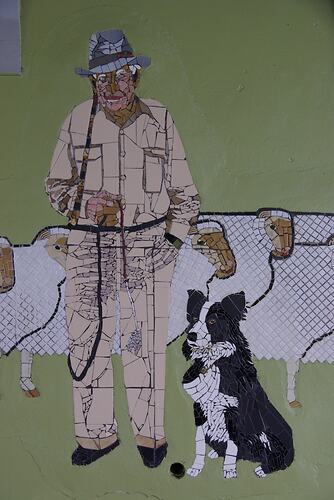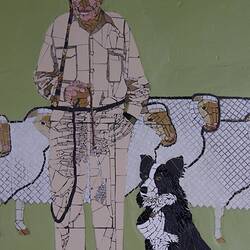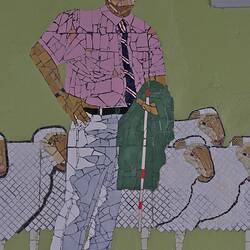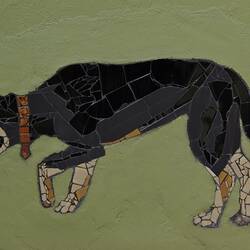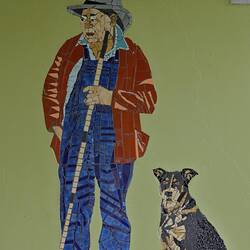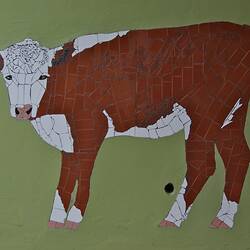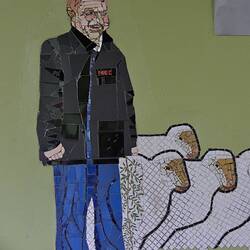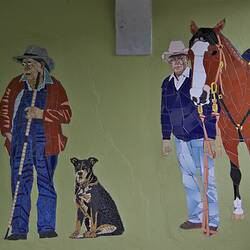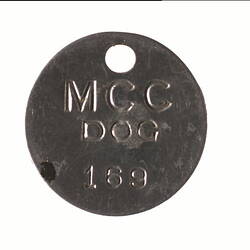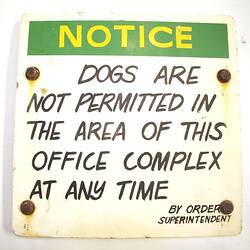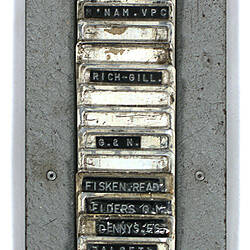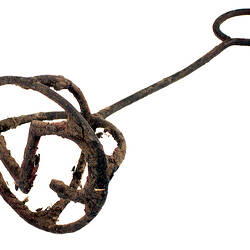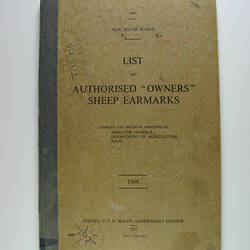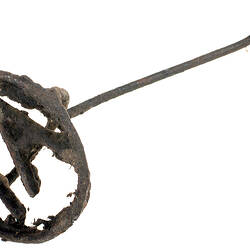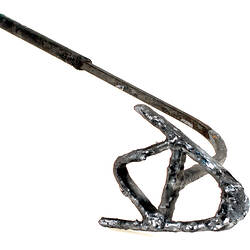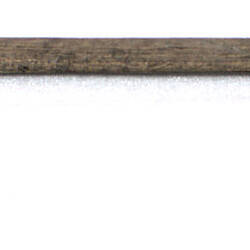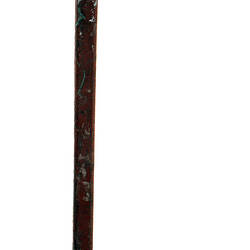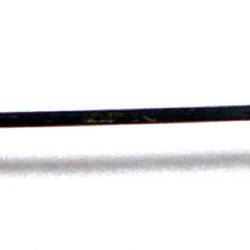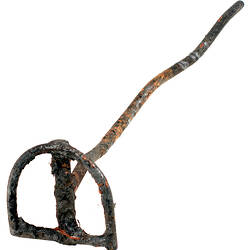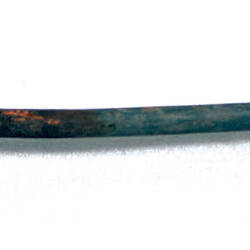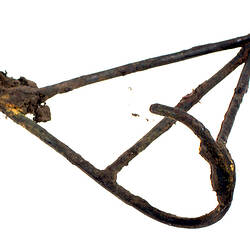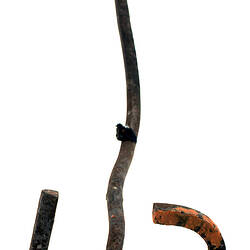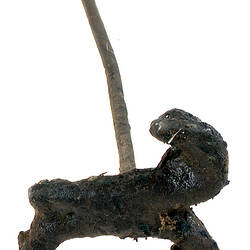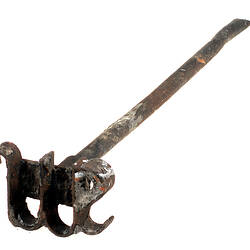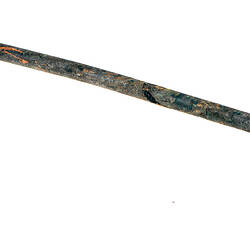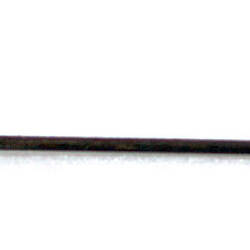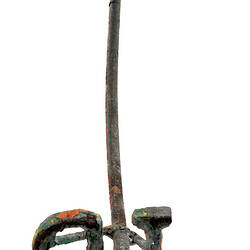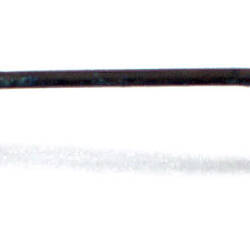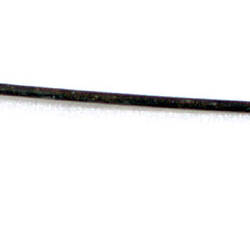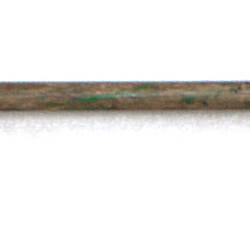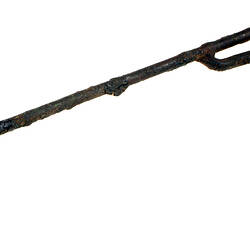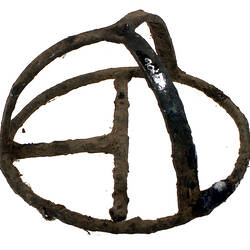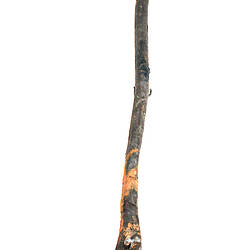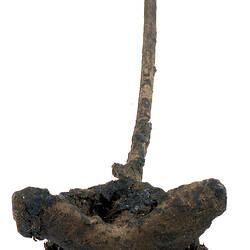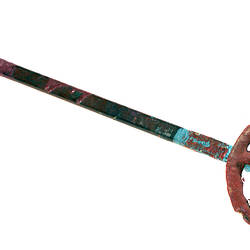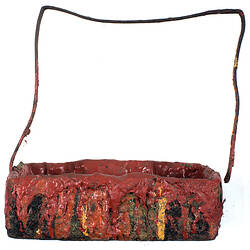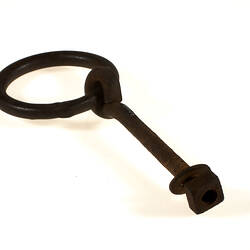During the peak seasonal periods at the Newmarket Saleyards, up to 300,000 cattle, sheep and lambs were handled in one day. Stock were moved to, from and around the Newmarket Saleyards, at various times moved along the local streets; from railway sidings to the saleyards; through drafting, receiving, penning and selling yards; from the saleyards to the adjoining abattoirs; or loaded onto trucks to be transported.
Drovers played a critical part in Stock Management, ensuring stock remained unharmed, unmarked, and in the correct place at the required time. Drovers' dogs, numbering in the hundreds, worked the Saleyards, adding to the cacophony of animal noise. One method drovers used to track stock was by branding iron or branding stick. Branding Irons or Sticks are tools with the purpose of leaving a mark usually to indicate ownership. In order for the hide or fleece of stock to be kept in optimal condition, branding irons at the Newmarket Saleyards were only used with removable materials. Prior to the Second World War, tar was used for branding, and then paint was used. For sheep branding, a mixture of sump oil and red ochre was used so as not to compromise the fleece for shearing. Animals were branded on the shoulder, loin, tail and loin, or at the hip points. Curry combs were wet with water or petrol and used to remove any manure, dirt or unwanted marking before a sale. Brands were applied after stock had been sold to indicate owner or Stock Agent. Branding irons and sticks could be either long handled, usually for use on cattle, or short handled for use at close quarters with sheep. A Branding Pot was often found hanging at the lane gateway and stock would be marked as it passed.
After the Stock Agents sold the cattle, the drovers would be waiting to mark the sold stock. If the branding pot became too built up with paint, the drovers would put the tin on the fire and burn out the leftover paint remnants. Agents were sometimes identified by different branding colours. Some Newmarket workers recollect that Stock Agents were represented by the following colours: Elders: Light Blue; Australian Estates: Silver; Gippsland and Northern Co-Operative: Dark Green; and Fairbairn: Red.
Melbourne City Council workers were also responsible for stock management by tallying the number of livestock passing through the gates at the Epsom Road underpass, the Main Lane, or any other delivery outlet, then calculating and collecting yard dues and charges which had to be paid by the Stock Agents. Council Animal Inspectors and Veterinarians protected the health and wellbeing of stock, and council workers ensured the cleanliness of the Saleyards by removing manure and cleaning stock pens.
References:
Vincent, K. 1992, On the fall of the hammer: a personal history of Newmarket saleyards, Lee White ed, State Library of Victoria, Melbourne.
More Information
-
Keywords
agricultural industry, Working Lives, country life, city & town life
-
Authors
-
Article types
